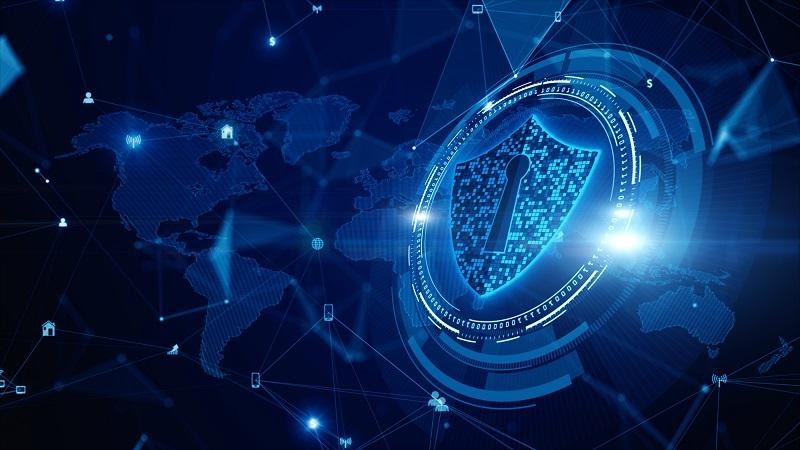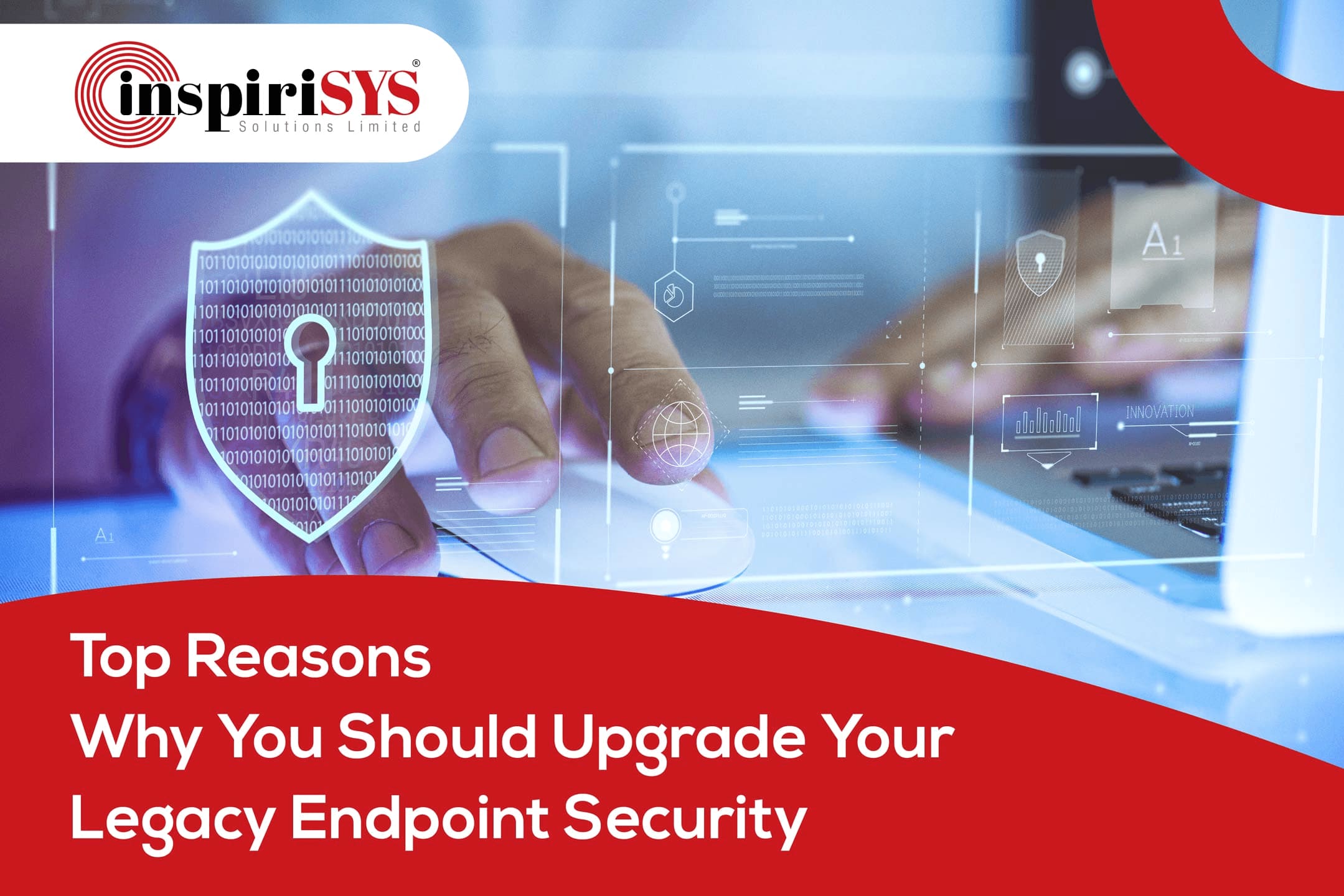Over the past few years, companies have been needing to constantly rethink their security strategies. Traditional digital strategies have changed and so has endpoint security.
Many innovations have taken place in the past decade. While the adoption of cloud computing has had an impact on how security policies are set, it has been compounded by the increasing use of bring-your-own-device (BYOD) within organizations. The rapid increase of remote workers has transformed and expanded the number of endpoints connecting to networks.
These new devices multiply the number of vulnerabilities, particularly when they are employees’ own devices, all having their security policies and vulnerabilities. For instance, the Internet of Things (IoT) often gets lost from endpoint monitoring and can be an easy target for external threats.
If your current systems can't handle this shift, it's time you invested in a change. Several companies today are extremely keen on transforming their IT landscapes. There could be many reasons for this. The company could have outgrown an existing provider, may have been compromised by a previous attack or decided to change their existing IT structure. They might have even decided to become more cloud-based or adopted a BYOD policy.
Legacy endpoint security solutions may no longer work in this situation. Unless they are designed for current procedures, they won't be reliable.
When making a change, it is essential that you pick an endpoint security software that will meet all your security demands. Let us look at some compelling reasons why you should upgrade your legacy endpoint security solutions.

Threat Prevention
Modern-day threats have started becoming increasingly sophisticated. Older products, which were designed for that particular IT landscape, won’t be able to counter these modern attacks. Your endpoint security software needs to be robust enough to mitigate sophisticated attacks of any kind.
Behavior Analysis
Behavior analysis ensures the detection of fileless threats early on. The software analyzes execution patterns and recognizes attacks. It also checks the parent process of the application, to determine whether it is from a legitimate source or not.
Remediation Engine
Once such a threat has been identified, it becomes necessary to find a way to isolate and restore user data to its original state.
Seamless Work from Anywhere Solutions
Today's increased focus on business continuity and a hybrid work environment has expedited the need for fast, secure and reliable access to all work applications. Employees should be able to access their applications at any location and have the same experience everywhere. It could be from home, from a public location, or a hotel, branch or corporate office. They should also be able to access these applications across any network.
Research by Gartner states that 70% of CIOs have started driving their business initiatives by focusing on work-from-anywhere solutions. The key factor when it comes to work-from-anywhere is going beyond the old, traditional access solutions to ensure that there is secure access to all applications.
Working on Zero Trust Principles
Modern organizations keep their most valuable assets secure by adopting a zero trust framework, especially when they're working in a distributed, cloud-native environment.
Zero trust essentially works on the assumption that no network is safe from threats. It assumes that all users and services can be a threat, whether they're inside or outside your office network. Verification from everybody is essential to gain access to network resources.
Adopting this 'never trust, always verify' approach makes it easier to closely monitor access to your Desktop as a Service (DaaS). You can verify end-to-end encryption and use analytics extensively. This will help you gain better visibility, drive threat detection, and improve your security defense.
Your system would need access requests to be continuously evaluated before they're connected to any of your applications and services in the Zero Trust framework. Logins, connections, and API tokens would be temporary and keep changing. Users would need to keep authenticating their identities and privileges each time they login.
In a world where users are physically distributed through multiple devices, your organization will need to have strict access control and ensure continuous evaluation of these access controls.
Minimal Privileges
A core principle of the zero trust framework is about making sure that your users have access to the barest of resources. Your organization should clearly understand what resources each employee needs access to and what they need to do with those resources, and limit unauthorized access accordingly.
Segmentation of Networks
A smart way of minimizing the scope and blast radius of a security breach or incident can be to break down your DaaS into smaller, focused segments within your network. These network segments work independent of each other. This will prevent attackers from moving laterally within your network. Every individual segment works on its own set of users, roles, and access policies that are continuously evaluated and monitored.
Assuming Breach
Zero Trust inverts the standard risk analysis model by assuming and preparing for a cyber breach before it happens. It first works on reducing security risks using Artificial Intelligence (AI) and machine learning (ML) systems and then assigning the risk parameters. It does this by using data policies around the information access of users and their devices. It is essential for enterprises to plan for attackers both inside and outside the office network.
This makes sure that when an enterprise has to respond to a breach, it already has the relevant context to understand the scope of this breach and take immediate action. Assuming there is always a breach can also ensure the right balance between the productivity of an organization, its people, and security.
Management Flexibility
Just like legacy endpoint security solutions struggle to mitigate modern threats, they aren't ideally designed for a cloud landscape either.
The Cloud Industry Forum reports that 93% of companies are now embracing the cloud in some form or the other. We’ve already seen that the cloud could be a key change driver for companies as they make the transition from a centralized data center view of the world to one adopting cloud principles.
All security tools should be able to control existing attack vectors, including the new ones introduced by changes in the infrastructure.
Support for Remote Workers
Corporate networks need to be as secure as possible and resistant to external attacks. Remote workers access corporate infrastructures from an external location, and the existing endpoint security software may often not be resilient enough. This makes it even more important to have an endpoint protection platform which can secure endpoints remotely.
This can prove to be quite a challenge. Some users may not have updated their security policies for several months while the others may be using PCs that are using an outdated operating system.

Automation
The degree of automation deployed is important for the effectiveness of endpoint security. Any organization that can reduce human interaction is going to have a head-start when it comes to controlling unwanted activity.
This is true for cloud deployment. Allocating workloads manually has become more complex, but automation has reduced the need for human interaction.

Endpoint Detection and Response (EDR) and Enhanced Visibility
In the modern world, businesses must be able to act swiftly to threats. Endpoint Security products offer some sort of protection for greater effectiveness. It's crucial to combine threat blocking with root cause analysis. Endpoint Detection and Response (EDR) not only blocks threats but also ensures that these attacks are not spread across the corporate infrastructure. It offers visibility across all endpoints, offering not only protection but analysis of any perceived threats. Security managers have access to a real-time view of any threat, no matter how complex an attack.
Sandbox for Advanced Threat Protection
The most common strategy deployed by businesses to protect data is the use of sandboxes. Sandboxes provide an additional security layer to automate detection and the response to threats. The Sandbox works by detonating malicious applications in isolation, to analyze and detect even advanced exploits used in targeted attacks.
Data Protection with Encryption Management
To prevent data leakage through the loss of a storage device, full disk encryption (FDE) comes to the rescue. If your company has an extensive number of devices within its domain and there are concerns that the unencrypted files could be released to the public, it is time to act on it by doing a security risk assessment and changing your security provider, if needed.

Vulnerability Management and Systems Hardening
Organizations need to be reactive to threats and assess how prepared and robust their systems are to mitigate them. Effective patch management ensures that security vulnerabilities can be detected early. Many attacks are perpetrated against unpatched software. Scanning for and patching these vulnerabilities ensures that your systems are immediately protected against threats.
InspiriSYS Offers Endpoint Security Solutions
Does your organization's endpoint security software meet all the strains placed upon it? Can it handle cloud and on-premise with ease, managing them both from a common platform?
As the world grows increasingly complex, companies need to adjust their IT infrastructure and security solutions accordingly. At InspiriSYS, we realize that endpoint security is no longer the last line of defense. Traditional endpoint security solutions such as anti-virus solutions cannot detect or prevent modern day threats such as zero-day known vulnerabilities. They cannot even provide protection outside your organization's firewall.
InspiriSYS offers advanced malware defense, sandbox tools and a host of Endpoint Detection and Response Tools to strengthen your endpoint defense. Get in touch with us and upgrade your legacy endpoint protection solutions today!







